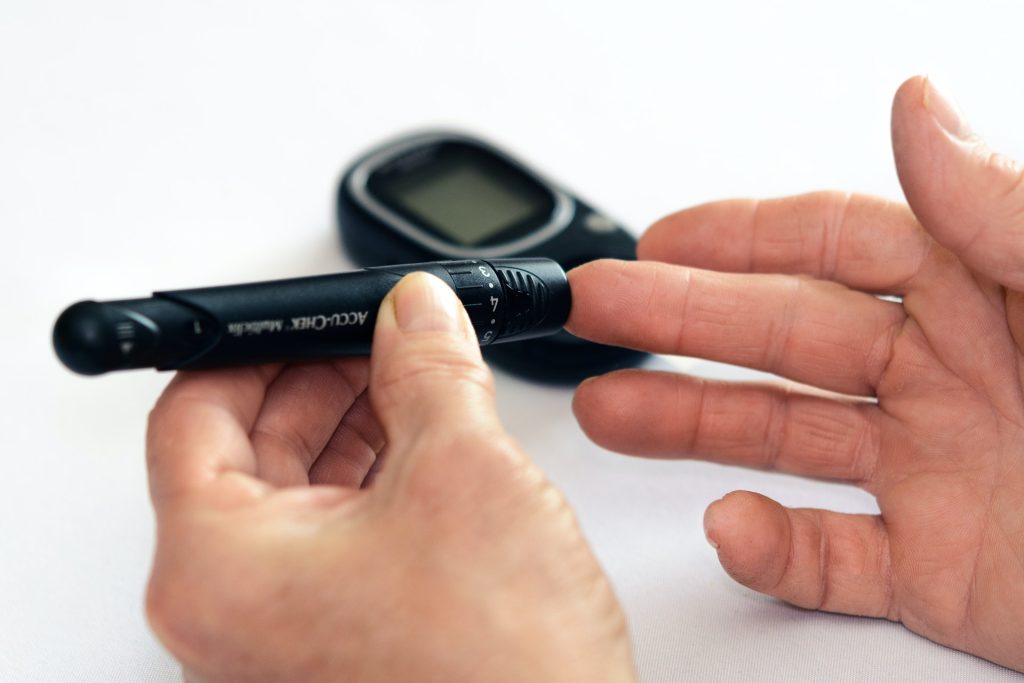
People with type 1 diabetes require continuous insulin treatment and must regularly measure their glucose levels. With open-loop therapies*, insulin administration is manually controlled, while hybrid closed-loop systems* automatically regulate insulin delivery. A study with the involvement of the German Center for Diabetes Research showed that hybrid closed-loop systems offer improved long-term blood sugar values (HbA1c levels) and a lower risk of hypoglycaemic coma, but lead to a higher rate of diabetic ketoacidosis. The results were published in The Lancet Diabetes & Endocrinology.
Despite advances in insulin therapy, many people do not achieve their blood glucose targets and have a high risk of complications. Until now, the effect of insulin delivery in hybrid closed-loop systems on the risk of acute diabetes complications in people with type 1 diabetes has been unclear. Researchers have therefore now investigated whether the rates of severe hypoglycaemia and diabetic ketoacidosis are lower with hybrid closed-loop insulin therapy compared with sensor-augmented (open-loop) pump therapy.
Study with Nearly 14 000 Participants
In order to answer this question, the researchers, led by Professor Beate Karges, Faculty of Medicine at the RWTH Aachen, examined the data of nearly 14 000 participants. The study involved young people with type 1 diabetes from 250 diabetes centres in Germany, Austria, Switzerland, and Luxembourg. The participants were aged 2 to 20 years and had a type 1 diabetes duration of more than one year. They were identified from the Diabetes Prospective Follow-up Registry (DPV)**. The primary objectives of the study were to determine the rates of severe hypoglycaemia and ketoacidosis. Differences in HbA1c levels, time in the target range of 3.9 to 10.0mmol/L (70–180mg/dL), and fluctuations in blood sugar were also investigated. The data of 13 922 patients (51% male) were included in the analysis. Median age was 13.2 years; 7088 used a hybrid closed-loop system and 6834 used an open-loop system. The median observation time was 1.6 years.
Lower Rate of Hypoglycaemic Coma and More Ketoacidosis Events with Hybrid Closed-Loop Therapies
The results: People using hybrid closed-loop therapy had a significantly lower rate of rate of hypoglycaemic coma (0.62 per 100 patient-years) than those using open-loop therapy (0.91 per 100 patient-years). Furthermore, patients in the hybrid closed-loop group had a significantly lower HbA1c level (7.34% versus 7.50%). They had a higher percentage of time in the target glucose range of 3.9 to 10.0 mmol/L (64% versus 52% of the time). Their glycaemic variability was also lower (coefficient of variation of 35.4% versus 38.3%). There was no significant difference in the rate of severe hypoglycaemia.
However, individuals using a hybrid closed-loop system had a higher rate of ketoacidosis (1.74 events per 100 patient-years) than those using open-loop therapy (0.96 per 100 patient-years). The rate of ketoacidosis was particularly high in people with an HbA1c level of 8.5% or higher in the closed-loop therapy group (5.25 per 100 patient-years). In the comparison group, a rate of 1.53 events per 100 patient-years was observed.
Recommendation: Monitor Ketone Bodies Closely
Due to the higher risk of ketoacidosis, it is important to provide patients with targeted information and, in case of potential metabolic decompensation, to closely monitor ketone bodies in the blood or urine in order to prevent such adverse events, emphasize the authors of the study.

